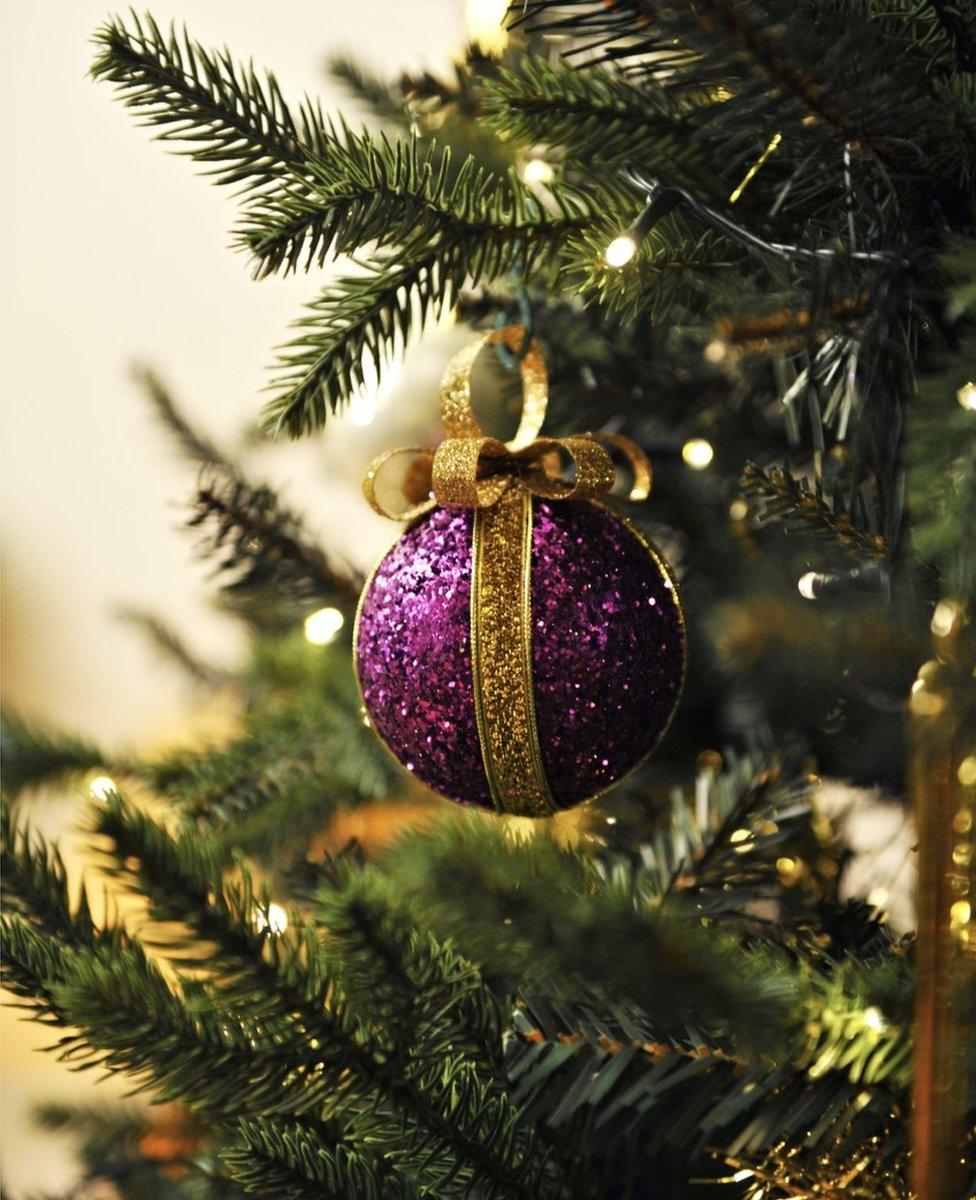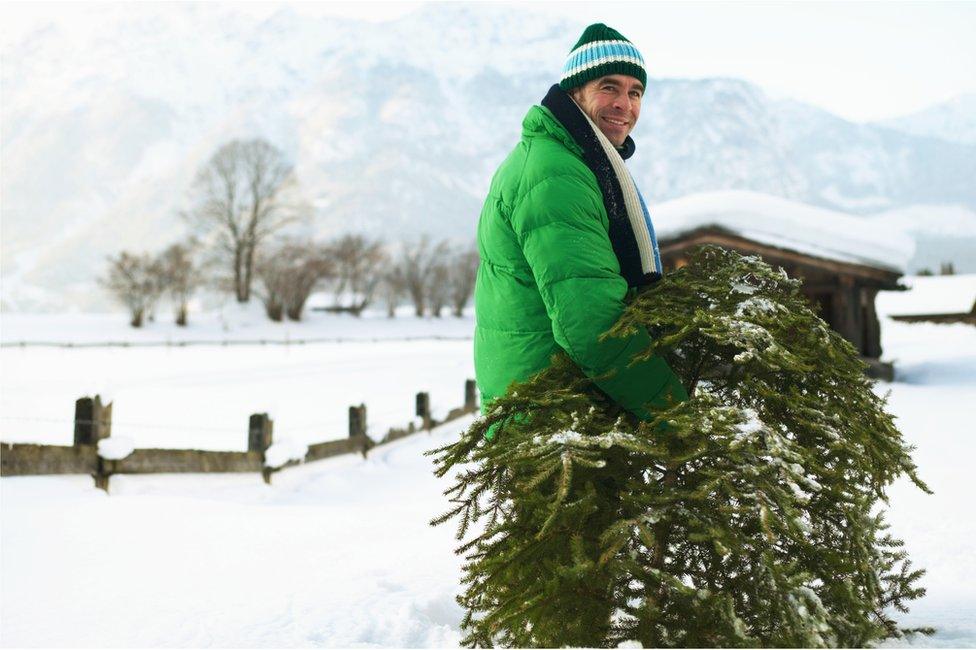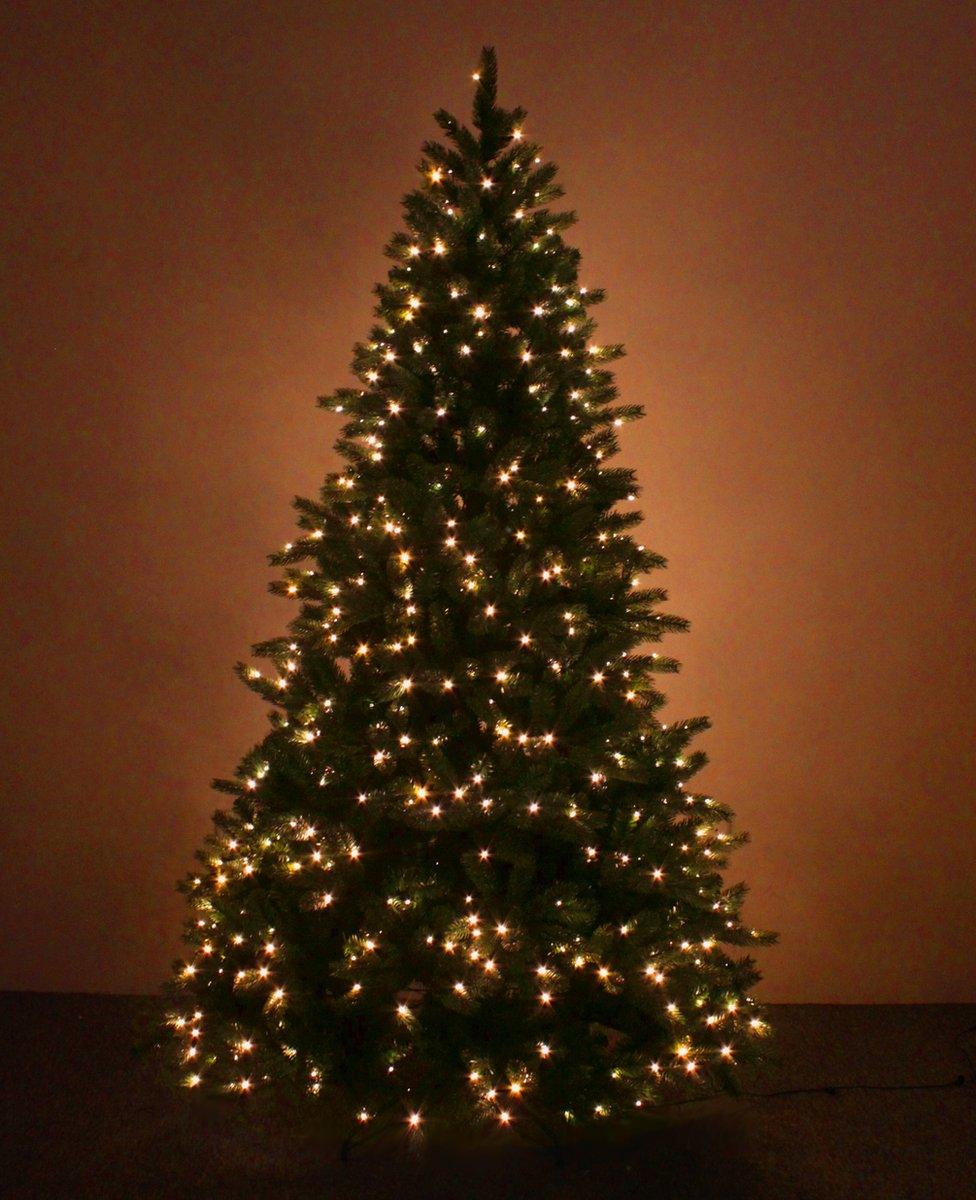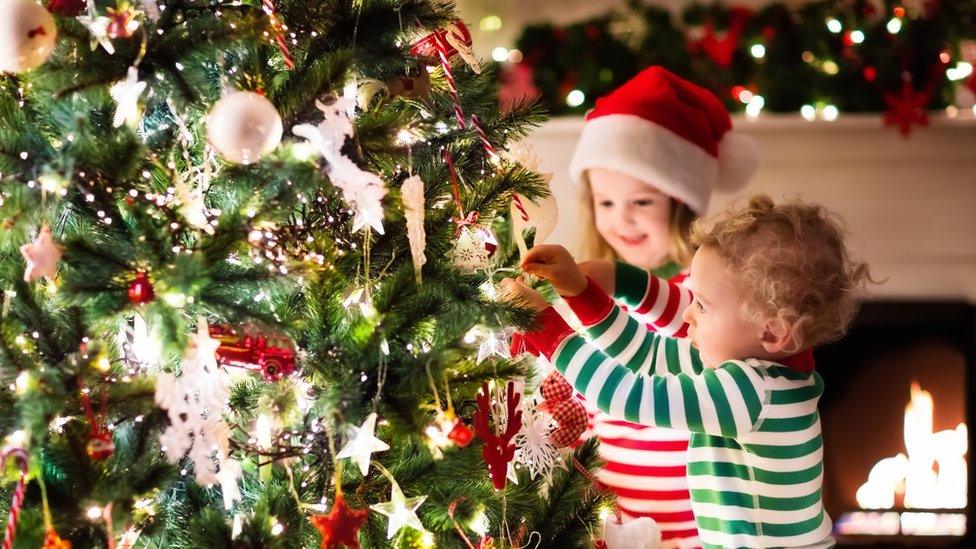Christmas trees: Real or fake?
- Published

What are the pros and cons of real and artificial Christmas trees?
It's the time of year when Christmas trees go up, becoming the centrepiece of our family festivities. We will adorn their branches with twinkling lights and colourful baubles and place our lovingly wrapped gifts underneath. As such a focal point in our celebrations, getting the tree right is important. But what are the pros and cons of choosing a real or artificial tree? Our BBC News elves asked some experts.
This weekend many families will be heading up to the loft or to a Christmas tree farm to find their perfect pine. It's been a tradition since the Victorian era but today we are spoiled for choice.
From cost to carbon footprint what should you consider when choosing your tree?
Are these Britain's worst Christmas trees?
For more stories about Christmas trees and decorations follow us on Pinterest, external
Dr John Kazer, at the Carbon Trust, says an average artificial tree was made of plastic which comes from oil. This accounts for two thirds of its carbon footprint.
Another quarter of its environmental impact comes from the industrial emissions produced when the tree is manufactured.
He said a 2m artificial tree has a carbon footprint equivalent to 40kg of greenhouse gas emissions, which is more than twice that of a real tree that ends its life in landfill - and more than 10 times that of real trees that are burnt.
"So if you have an artificial tree at home you would need to reuse it for at least 10 Christmases to keep its environmental impact lower than that of a real tree," he said.

Artificial Christmas trees can look very realistic, said Stephen Evans
Mr Kazer said the way in which a real tree is disposed of was "much more significant than where it comes from".
The Carbon Trust estimates that for a two metre real Christmas tree with no roots, the carbon footprint is equivalent to 16kg of greenhouse gas emissions if it ends up in landfill.
This is because the tree decomposes and produces methane gas, which is 25 times more potent as a greenhouse gas than carbon dioxide, according to the trust.
"If you burn your Christmas tree on the bonfire, plant it or have it chipped to spread on the garden, that significantly reduces the carbon footprint by up to 80% or around 3.5kg CO2e (greenhouse gas emissions)."
Burning the tree emits the carbon dioxide that it stored up when it was growing so there would be no net increase, he said.

Real Christmas trees have a much lower carbon footprint than artificial according to the Carbon Trust
So real trees have much lower carbon footprints than artificial Christmas trees. But what else is there to consider?
Stephen Evans, managing director of Christmas Tree World based in Wigan, sells both real and artificial trees.
His artificial trees can be found in airports, universities, stately homes and hospitals.
"Our artificial trees are flame retardant which is a major thing for big public buildings," he said.
"When real trees dry out they become quite flammable."
He said hospitals use artificial trees because some patients have allergies. The company also supplies Blenheim Palace in Oxfordshire.
House manager Kate Ballenger said: "Whilst we do grow our own trees on the estate, it's important that we also use artificial trees to limit the risk of insects being bought in that would damage the collection inside the palace."

Pre-lit artificial Christmas trees are becoming increasingly popular, said Stephen Evans
Artificial trees have some benefits for large buildings but what about the average household?
One of the greatest benefits of an artificial tree is the cost, said Mr Evans.
"You can use them year after year so the money saving is enormous," he said.
"You can bring it out of the loft each year instead of the hassle of going out and getting a real one.
"Artificial trees have improved so much that they actually fool people into thinking they're real.
"Pre-lit trees are increasing in popularity. The lights are put on better that you could ever do it at home.
"Also artificial trees don't drop needles all over the floor."

Selecting and decorating a real tree creates "wonderful memories" said Harry Brightwell from the British Christmas Tree Growers Association
But for Harry Brightwell, secretary of the British Christmas Tree Growers Association, there is something about a real tree that cannot be replicated.
"It's the look, texture and smell of the real tree that makes it so special," he said. "Just like us, each one is unique.
"The process of buying a real tree, going out with your loved ones, friends and neighbours and selecting the perfect size, shape and colour for your home creates the most wonderful memories."
The answer lies in the tree's carbon footprint, how many times it is reused and how it is disposed of.
Other factors to consider when choosing a tree include cost, effort required, fire safety, allergies and insects.
This story was prompted by Kathie Walters who used Your Questions to ask: "Is my artificial Christmas tree good for the environment or are real trees better?"